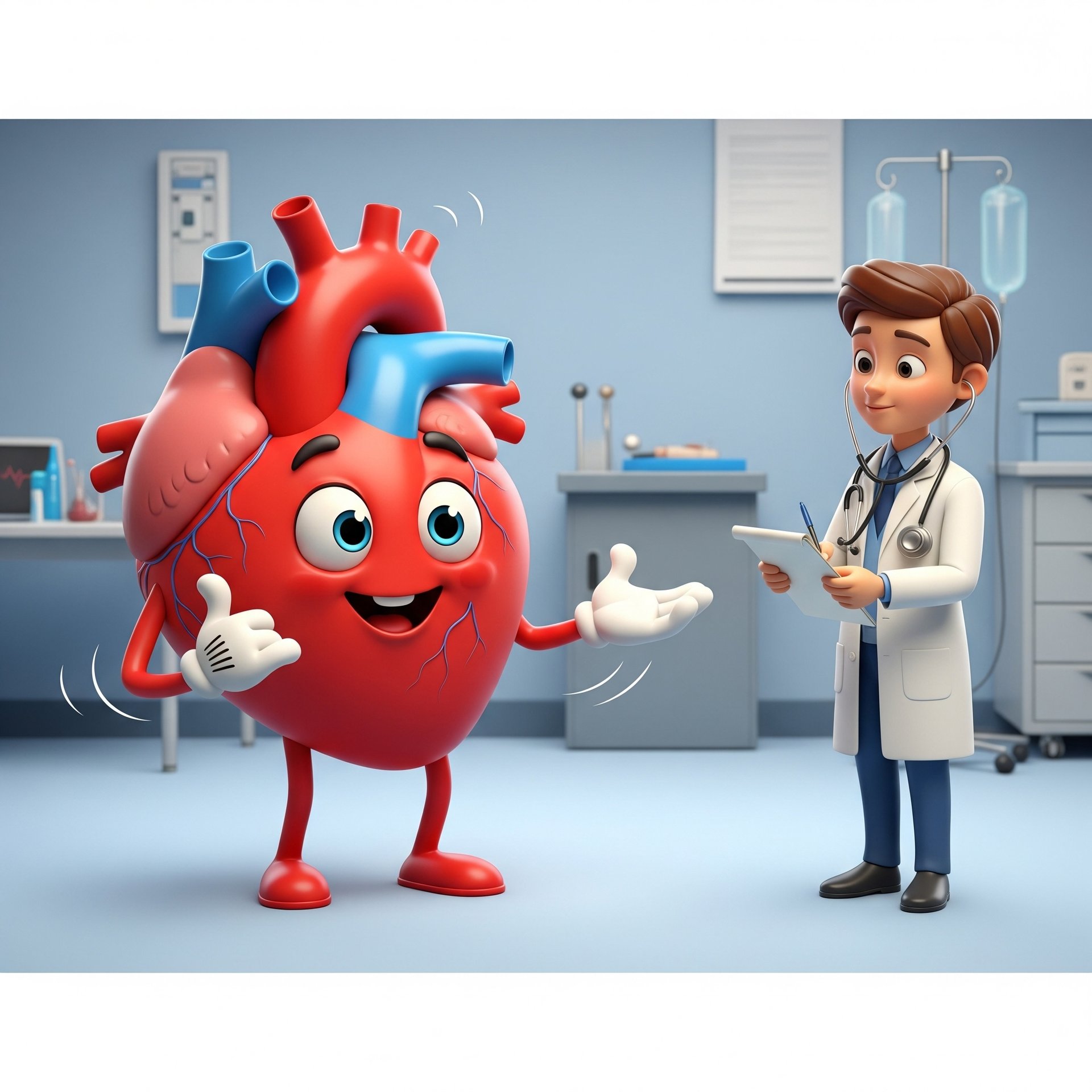THEMEDPRACTICALEXAM.COM

History Taking Protocol for Fatigue (Cardiac Symptom)
1. Patient Details
Name, Age, Sex, Occupation, Address
2. Presenting Complaint
Fatigue/tiredness (ask for patient’s own description)
Duration and progression
3. History of Presenting Illness
Onset: When did the fatigue start? Was it sudden or gradual?
Duration: How long has the fatigue been present?
Course: Is it getting worse, better, or fluctuating?
Pattern: Constant or intermittent?
Severity: How does it affect daily activities, work, or exercise tolerance?
Exacerbating factors: Physical activity, exertion, emotional stress, time of day
Relieving factors: Rest, sleep, medications
Associated symptoms:
Shortness of breath (especially on exertion)
Chest pain or discomfort
Palpitations
Swelling of feet or ankles (edema)
Orthopnea or paroxysmal nocturnal dyspnoea
Dizziness or syncope
Weight gain or loss
Nocturia
Previous episodes: Any similar complaints in the past?
Impact: Limitation of routine or hobbies, need for assistance
4. Past Medical History
History of heart disease (heart failure, ischemic heart disease, valvular disease, arrhythmias)
Hypertension, diabetes, hyperlipidemia
Chronic kidney disease, respiratory disease, anemia, thyroid disorders
Previous hospitalizations or surgeries (especially cardiac procedures)2
5. Drug History
Current and past medications (especially beta-blockers, ACE inhibitors, diuretics, statins, antiarrhythmics, antidepressants, sedatives)1257
Over-the-counter drugs or herbal remedies
Recent changes in medication
Any side effects noticed (especially new or worsening fatigue)
6. Personal History
Diet and salt intake
Physical activity level
Smoking and alcohol use
Sleep pattern and quality (insomnia, sleep apnea symptoms)
Occupational or psychosocial stress
7. Family History
Family history of cardiovascular disease, sudden cardiac death, hypertension, diabetes, or other chronic illnesses2
8. Socioeconomic History
Occupation and work-related stress
Living conditions and support system
Access to healthcare
9. Systemic Enquiry
Respiratory: Cough, breathlessness, wheeze
Renal: Oliguria, nocturia, edema
Neurological: Dizziness, headache, weakness
Endocrine: Weight changes, intolerance to heat/cold
Mood: Symptoms of depression or anxiety

Case History
Personal Details:
Mr. Suresh Patel, 60-year-old male, retired clerk
Presenting Complaint:
Persistent fatigue for 4 months
History of Presenting Illness:
Mr. Suresh Patel reports feeling increasingly tired and lacking energy for the past 4 months. The fatigue is present throughout the day, worsens with exertion (such as walking or climbing stairs), and is only partially relieved by rest. He finds it difficult to complete household chores and has reduced his participation in social activities.
He also notes mild shortness of breath on exertion, swelling of both ankles in the evenings, and occasional palpitations. He denies chest pain, syncope, cough, fever, or significant weight loss. There is no history of recent infections or major emotional stress.
Past Medical History:
Hypertension for 12 years, on regular medication
Ischemic heart disease diagnosed 3 years ago, on medical management
No history of diabetes, chronic kidney disease, or thyroid disorder
No previous hospitalizations for heart failure
Drug History:
Amlodipine 5 mg once daily
Metoprolol 50 mg once daily
Aspirin 75 mg once daily
Atorvastatin 20 mg once daily
No recent changes in medication
No known drug allergies
Personal History:
Diet: Vegetarian, moderate salt intake
Physical activity: Reduced due to fatigue
Smoking: Quit 10 years ago (previously 20 pack-years)
Alcohol: Does not consume
Sleep: Adequate, no snoring or daytime sleepiness
Family History:
Father had coronary artery disease
No family history of heart failure or sudden cardiac death
Socioeconomic History:
Retired, lives with spouse in an urban area
Middle socioeconomic status
Good access to healthcare
Systemic Enquiry:
No cough, wheeze, or hemoptysis
No urinary or bowel complaints
No neurological symptoms (no headache, weakness, or dizziness)
No symptoms of depression or anxiety
Case Summary
Mr. Suresh Patel, a 60-year-old man with a history of hypertension and ischemic heart disease, presents with 4 months of persistent fatigue, exertional dyspnea, ankle edema, and reduced activity levels. There is no chest pain, cough, or significant weight loss.
Differential Diagnosis
Chronic Heart Failure (CHF):
Most likely, given the history of ischemic heart disease, exertional fatigue, dyspnea, and peripheral edema.
Medication Side Effects (especially beta-blockers):
Medications such as beta-blockers can contribute to fatigue.
Anemia:
Common in elderly and those with chronic diseases; can present with similar symptoms.
Chronic Kidney Disease:
Can cause fatigue and edema, especially in patients with hypertension.
Depression or Anxiety:
Can present with persistent fatigue, but patient denies mood symptoms.
Hypothyroidism:
Should be considered, especially if other causes are excluded.
Chronic Obstructive Pulmonary Disease (COPD):
Less likely in the absence of respiratory symptoms, but possible given past smoking history.

Viva Questions and Answers on Fatigue as a Cardiac Symptom
1. How can fatigue present as a cardiac symptom?
Fatigue in cardiac patients often manifests as reduced exercise tolerance, easy tiredness during daily activities, and a general lack of energy, especially with exertion. It is commonly seen in heart failure and other chronic cardiac conditions.
2. What are the cardiac causes of fatigue?
Heart failure (systolic or diastolic)
Valvular heart disease
Arrhythmias (e.g., atrial fibrillation)
Ischemic heart disease
Congenital heart disease (in adults)
3. What non-cardiac conditions can mimic cardiac fatigue?
Anemia
Hypothyroidism
Chronic kidney disease
Chronic lung disease
Depression or anxiety
Sleep disorders (e.g., sleep apnea)
4. What associated symptoms suggest a cardiac cause for fatigue?
Shortness of breath (especially on exertion)
Orthopnea or paroxysmal nocturnal dyspnea
Palpitations
Peripheral edema
Chest pain
Nocturia
5. What is the New York Heart Association (NYHA) classification?
The NYHA classification is a functional system used to assess the severity of symptoms and physical activity limitation in patients with heart failure. It helps guide treatment and monitor disease progression123456.
6. What are the four NYHA classes?
Class I: No limitation of physical activity. Ordinary activity does not cause undue fatigue, palpitations, or dyspnea.
Class II: Slight limitation of physical activity. Comfortable at rest, but ordinary activity results in fatigue, palpitations, or dyspnea.
Class III: Marked limitation of physical activity. Comfortable at rest, but less than ordinary activity causes symptoms.
Class IV: Unable to carry on any physical activity without discomfort. Symptoms may be present even at rest13456.
7. Why is the NYHA classification important in clinical practice?
It provides a standardized way to communicate the functional status of heart failure patients, helps in prognostication, guides therapy, and tracks response to treatment over time145.
8. How do you assess a patient’s NYHA class during history taking?
By asking about the level of physical activity that provokes symptoms such as fatigue, breathlessness, or palpitations, and whether symptoms occur at rest or only with exertion34.
9. Can a patient’s NYHA class change over time?
Yes, the NYHA class can improve with effective treatment or worsen with disease progression, so it should be reassessed regularly14.
10. What is the difference between the NYHA classification and the ACC/AHA stages of heart failure?
The NYHA classification is based on symptom severity and physical activity limitation, while the ACC/AHA stages (A–D) focus on the structural progression and risk factors for heart failure, regardless of symptoms157.
These questions cover the clinical approach to fatigue as a cardiac symptom and the practical application of the NYHA classification in patient care.